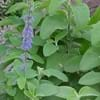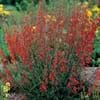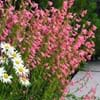Life Span
Perennial
Perennial
Type
Flowering Plants
Fruit, Palm or Cycad, Tree
Origin
Asia, Europe
Not Available
Types
American Lily of the Valley, European Lily of the Valley, Japanese Lily of the valley.
Not Available
Number of Varieties
Not Available
Habitat
Banks, Broad-Leaved Forests, coppices, Dry and Young forest Heaths, Forest margins, Ridges, Rocky Ridges
Humid climates, sandy seeps, shores, tropical environments
USDA Hardiness Zone
4-8
5-12
Sunset Zone
A1, A2, A3, H1, H2, 1a, 1b, 2a, 2b, 3a, 3b, 4, 5, 6, 7, 14, 15, 16, 17, 18, 19, 20
H2
Habit
Mat-forming
Upright/Erect
Flower Color
Pink, White
Yellow Brown
Flower Color Modifier
Not Available
Bicolor
Fruit Color
Not Available
Green
Leaf Color in Spring
Dark Green
Green
Leaf Color in Summer
Dark Green, Green
Golden Green
Leaf Color in Fall
Green, Yellow green
Green
Leaf Color in Winter
Not Available
Green
Leaf Shape
Bell Shaped
Pinnate
Plant Season
Fall, Spring, Summer
All year
Sunlight
Part sun, Partial shade
Full Sun, Part sun
Type of Soil
Moist, Well drained
Loam, Sand
The pH of Soil
Acidic, Neutral
Neutral, Slightly Acidic, Slightly Alkaline
Soil Drainage
Not Available
Well drained
Bloom Time
Late Spring, Spring
Not Available
Tolerances
Not Available
Salt
Where to Plant?
Container, Ground, Pot
Ground
How to Plant?
From Rhizomes, Seedlings
Seedlings, Transplanting
Plant Maintenance
Medium
Medium
Watering Requirements
Keep the ground moist but not water-logged, Requires a lot of watering, Water twice a day in the initial period, Water when soil is dry
Reduce watering during fall, Water daily during growing season, Water frequently while growing
In Summer
Lots of watering
Lots of watering
In Spring
Moderate
Moderate
In Winter
Average Water
Average Water
Soil pH
Acidic, Neutral
Neutral, Slightly Acidic, Slightly Alkaline
Soil Type
Moist, Well drained
Loam, Sand
Soil Drainage Capacity
Not Available
Well drained
Sun Exposure
Part sun, Partial shade
Full Sun, Part sun
Pruning
Do not prune during shooting season, Prune after harvesting, Prune in late summer or fall, Prune to stimulate growth, Remove deadheads
Cut limbs, Remove dead branches
Fertilizers
All-Purpose Liquid Fertilizer
Nitrogen, Phosphorous, Potassium, slow-release fertilizers
Pests and Diseases
Anthracnose, Aureobasidium leaf spot, Foliar nematode, Leaf spot, Mealybugs, Rust, Southern blight
Bud rot, Cadang-cadang, Coconut bug, Coconut foliar decay, Coconut scale, Ganoderma butt rot, Gray leaf blight, Lethal bole rot, Lethal yellowing, Mealybugs, nutfall, Red ring nematode, Stem bleeding disease
Plant Tolerance
Drought
Salt
Flower Petal Number
Not Available
Single
Edible Fruit
Not Available
Yes
Fragrant Fruit
Not Available
No
Fragrant Leaf
Not Available
No
Foliage Texture
Coarse
Fine
Foliage Sheen
Not Available
Matte
Self-Sowing
Not Available
No
Attracts
Bees
Not Available
Allergy
Headache, Nausea, Vomiting
Abdominal pain, Anaphylaxis, cramps, Mouth itching, Nasal Congestion, Nausea, Runny nose, Skin irritation, Throat itching
Aesthetic Uses
Beautification, Showy Purposes
Beautification, Landscape Designing, Showy Purposes
Beauty Benefits
Not Available
Good for skin, Good for the Scalp, Hair Conditioner, Heals Damaged Hair, Makes Hair Silkier, Making cosmetics, Removes dandruff, Restores Hair Colour
Environmental Uses
Air purification
Air purification, No fertilizer, pesticides, or herbicides needed, Wildlife
Medicinal Uses
Chest pain, Swelling
Antibacterial, anti-cancer, Antifungal, Antioxidants, Antiviral, Digestion problems, Heart problems, Immunity, Skin Disorders, Weight loss
Part of Plant Used
Flowers, Leaves, Root
Whole plant
Other Uses
Air freshner, Cosmetics, Oil is used for aromatherapy, Oil is used in perfume, soaps, creams, etc., Showy Purposes, Used As Food, Used as Ornamental plant, Used for fragrance
Air freshner, Animal Feed, Application in Furniture, Application in Handicrafts, For making oil for cosmetics, Oil is used for aromatherapy, Traditional medicine, Used as a nutritious food item, Used as a vegetable oil
Used As Indoor Plant
Yes
No
Used As Outdoor Plant
Yes
Yes
Garden Design
Bedding Plant, Bog Garden, Cutflower, Edging, Foundation, Mixed Border
Edible, Feature Plant, Fruit Tree, Landscape, Tropical
Botanical Name
Convallaria majalis
Cocos nucifera
Common Name
Lily of the Valley
Coconut Palm, coconut tree
In Hindi
कामुदिनी
नारियल का पेड़
In German
Maiglöckchen
Kokospalme
In French
Lily of the Valley
Cocotier
In Spanish
Lirio de los valles
El cocotero
In Greek
Κρίνος της κοιλάδας
καρύδας δέντρο
In Portuguese
Lírio do Vale
Coqueiro
In Polish
Lilia doliny
Drzewo kokosowe
In Latin
Lílium convállium
dolor ligno
Phylum
Tracheophyta
Magnoliophyta
Class
Magnoliopsida
Liliopsida
Order
Asparagales
Arecales
Family
Asparagaceae
Aceraceae
Clade
Angiosperms, Monocots
Angiosperms, Commelinids, Monocots
Tribe
Not Available
Cocoeae
Subfamily
Nolinoideae
Arecoideae
Number of Species
Not Available
Not Available
Importance of Lily of the Valley and Coconut Tree
Want to have the most appropriate plant for your garden? You might want to know the importance of Lily of the Valley and Coconut Tree. Basically, these two plants vary in many aspects. Compare Lily of the Valley and Coconut Tree as they differ in many characteristics such as their life, care, benefits, facts, etc. Every gardener must at least have the slightest clue about the plants he wants to plant in his garden. Compare their benefits, which differ in many ways like facts and uses. The medicinal use of Lily of the Valley is Chest pain and Swelling whereas of Coconut Tree is Antibacterial, anti-cancer, Antifungal, Antioxidants, Antiviral, Digestion problems, Heart problems, Immunity, Skin Disorders and Weight loss. Lily of the Valley has beauty benefits as follows: Not Available while Coconut Tree has beauty benefits as follows: Not Available.
Compare Facts of Lily of the Valley vs Coconut Tree
How to choose the best garden plant for your garden depending upon its facts? Here garden plant comparison will help you to solve this query. Compare the facts of Lily of the Valley vs Coconut Tree and know which one to choose. As garden plants have benefits and other uses, allergy is also a major drawback of plants for some people. Allergic reactions of Lily of the Valley are Headache, Nausea and Vomiting whereas of Coconut Tree have Abdominal pain, Anaphylaxis, cramps, Mouth itching, Nasal Congestion, Nausea, Runny nose, Skin irritation and Throat itching respectively. Having a fruit bearing plant in your garden can be a plus point of your garden. Lily of the Valley has showy fruits and Coconut Tree has showy fruits. Also Lily of the Valley is flowering and Coconut Tree is flowering. You can compare Lily of the Valley and Coconut Tree facts and facts of other plants too.





